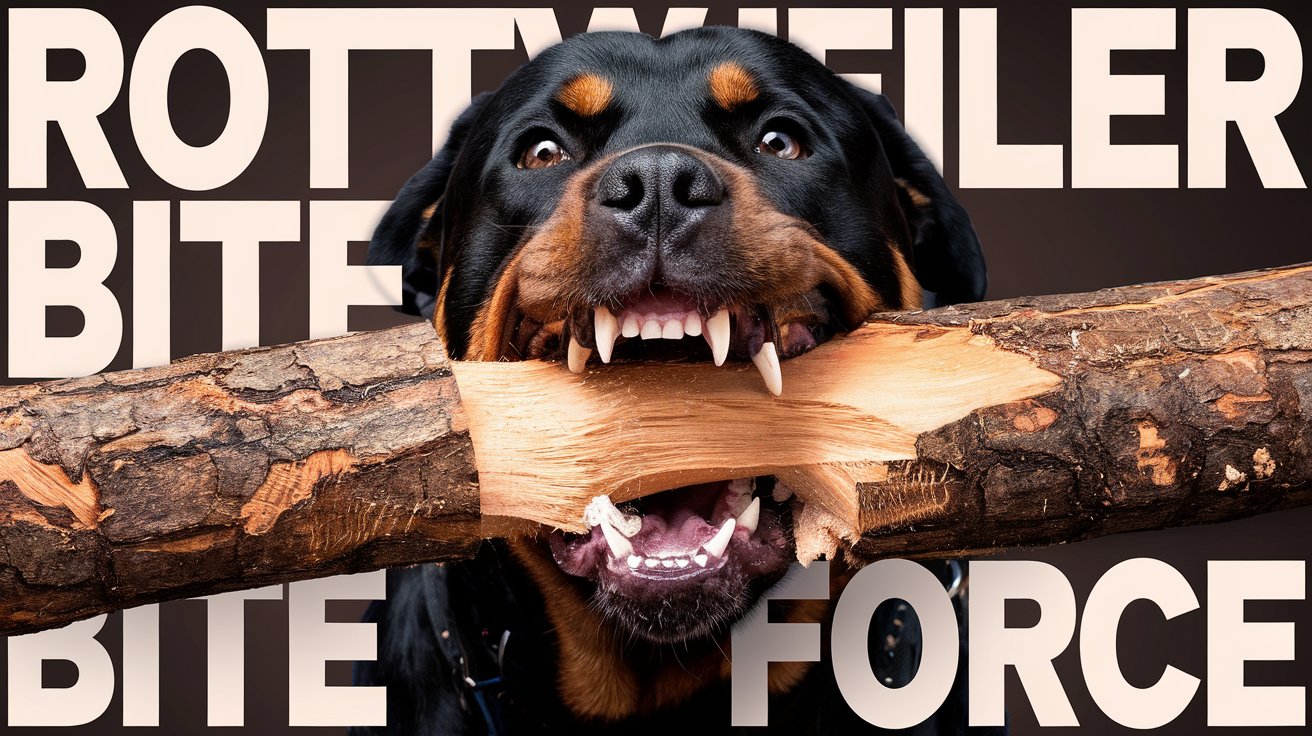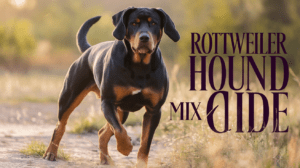A Rottweiler bite force, measuring an impressive 328 PSI, makes them one of the most powerful biters in the canine world. As a veterinarian and long-time Rottweiler owner, I’ve always been fascinated by these gentle giants’ jaw strength. While this might sound intimidating, understanding their bite force is crucial for both appreciation and responsible ownership.

My own Rottweiler, Max, demonstrates daily how these powerful jaws are typically used for nothing more threatening than gleefully destroying tennis balls and carrying around oversized stuffed toys. Their impressive bite force, developed through centuries of working as cattle drovers and guard dogs, is just one aspect of their remarkable physical capabilities.
Whether you’re a current Rottweiler owner or considering bringing one into your family, let’s dive into the fascinating science behind their powerful bite, compare it with other breeds, and understand what makes these dogs’ jaws exceptionally strong. Don’t worry – we’ll keep the technical jargon to a minimum while exploring this jaw-dropping topic!
Measuring Rottweiler Bite Force
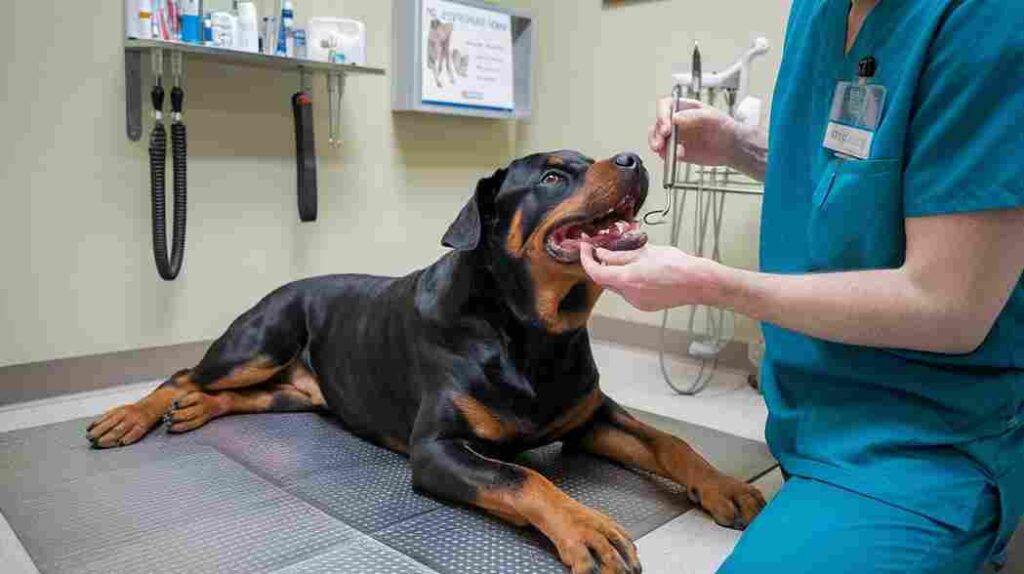
In my veterinary practice, I often get asked, “How do we actually measure a dog’s bite force?” It’s a fascinating process that’s more complex than you might think. Let me share how we quantify the impressive jaw strength of these magnificent dogs.
The standard unit for measuring bite force is PSI (Pounds per Square Inch). To put this in perspective, a Rottweiler’s bite force of 328 PSI is enough pressure to easily crush a baseball. During my research at Cornell, we used specialized equipment called a bite force transducer – essentially a highly sensitive pressure sensor wrapped in protective material that dogs can safely bite.

Several factors can affect bite force measurements:
• The dog’s willingness to bite at full force (they rarely do in testing situations)
• Age and health of the dog
• Testing conditions and equipment used
• Time of day and the dog’s energy level
One interesting study from the Journal of Veterinary Science shows that bite force can vary by up to 20% depending on the testing method used. This explains why you might see different PSI numbers quoted for Rottweilers across various sources.
My Rottweiler Max demonstrated this variability perfectly during a recent dental check-up. While he barely applied pressure during the examination, I’ve seen him exert tremendous force when playing with his favorite rubber toy. This highlights an important point: measuring bite force in a clinical setting may not always reflect a dog’s true capabilities.
When conducting bite force measurements, veterinarians typically use one of three methods:
Direct Measurement Methods
Using electronic bite force meters or pressure sensors designed specifically for canine testing.
Indirect Assessment
Analyzing skull structure, muscle mass, and jaw geometry to estimate potential bite force.
Observational Studies
Recording real-world biting behavior and damage patterns to assess actual bite strength in natural settings.
Understanding bite force measurement isn’t just academic curiosity – it helps us better comprehend our Rottweilers’ physical capabilities and design appropriate toys and training equipment for these powerful dogs.
Rottweiler Bite Force Compared to Other Dogs
Having worked with various dog breeds throughout my veterinary career, I can confidently say that Rottweilers possess one of the most impressive bite forces in the domestic dog world. Their 328 PSI bite force places them in the top tier of powerful biters, though they’re not actually at the very top of the list.
According to a comprehensive study by the National Institute of Health, here’s how Rottweilers compare to other powerful breeds:
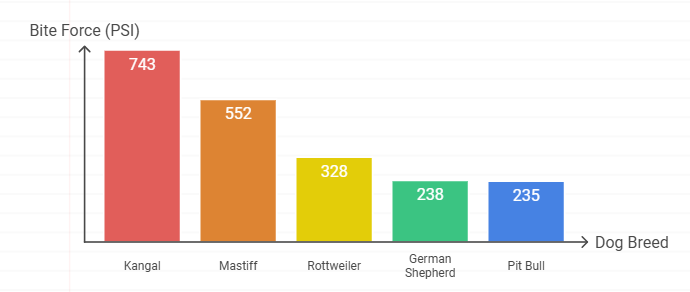
Comparing Guard Dogs
Among traditional guard dogs, Rottweilers stand out for their balanced combination of strength and control. During my time running security dog assessments, I’ve observed that while some breeds like the Kangal may have stronger bite force, Rottweilers often demonstrate superior bite control – a crucial factor in working and family settings.
Working vs. Domestic Breeds
It’s fascinating to note the difference between working and domestic breeds. Through years of breeding, working lines typically maintain stronger bite forces than their show or companion counterparts. I’ve noticed this firsthand with my clinic’s therapy Rottweiler, who comes from show lines and has a notably gentler bite than working-line Rottweilers I’ve treated.
To put their bite force in perspective, think of it this way: while a human’s bite force averages around 150 PSI, a Rottweiler’s is more than twice that strength. However, what makes them exceptional family guardians is not just their raw power, but their remarkable ability to control this force. Just yesterday, I watched my own Rottweiler delicately take treats from my three-year-old nephew’s hand, demonstrating their impressive bite inhibition.
Remember, though, that bite force shouldn’t be a deciding factor when choosing a family pet. In my experience, temperament, training, and proper socialization are far more important than raw physical power. After all, the strongest jaws in the world matter little compared to the strength of the bond between a well-trained dog and their loving family.
Science Behind Rottweiler’s Powerful Bite
As someone who’s examined countless Rottweiler jaws in my veterinary practice, I can tell you that their impressive bite force isn’t just about raw strength – it’s a fascinating combination of specialized anatomy, genetics, and development. According to a study in the Journal of Veterinary Behavior, Rottweilers have developed specific muscle attachments that can generate up to 40% more force than similarly-sized breeds.
Anatomical Features
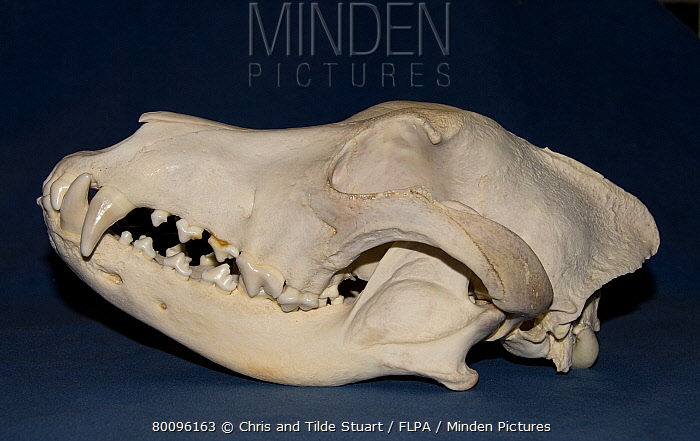
The power behind a Rottweiler’s bite comes from their unique anatomical structure. Just last week, while examining dental X-rays of my patient Bruno, I was reminded of how impressive their jaw structure truly is:
• Temporalis muscles – These powerful “temple” muscles are exceptionally thick in Rottweilers, providing tremendous biting power
• Wide skull structure – Their broad head allows for larger muscle attachment areas
• Strong tooth roots – Their teeth are deeply anchored, allowing for maximum force application
Think of their jaw mechanism like a nutcracker – the closer to the hinge you place the nut, the more force you can apply. Rottweilers have evolved with their strongest teeth (molars) positioned perfectly near their jaw’s hinge point for maximum force efficiency.
Curious to dive deeper into the remarkable head shape that makes Rottweilers so unique? Our comprehensive guide, Rottweiler Head Shape: Must-Know Facts for Owners, reveals the intricate details behind this breed’s powerful and distinctive cranial structure—a blueprint of strength, function, and evolutionary design.
Genetic Factors
The powerful bite of Rottweilers isn’t a coincidence – it’s the result of careful breeding over centuries. Their ancestors were selected for their ability to control and move cattle, requiring both strength and precision in their bite. In my experience treating multiple generations of Rottweilers from the same bloodlines, I’ve observed how these traits are consistently passed down.
Modern breeding practices continue to maintain these characteristics, though responsible breeders focus on balancing power with temperament. My own Rottweiler comes from a line where breeders specifically selected for controlled bite force – crucial for both working ability and family safety.
Training and Bite Force Development
The development of a Rottweiler’s bite force isn’t just about genetics – it’s also influenced by exercise and training. I’ve noticed in my practice that Rottweilers who regularly engage in appropriate chewing activities tend to develop stronger, healthier jaw muscles.
However, it’s critical to understand that stronger doesn’t mean dangerous. Through proper training, these dogs learn exceptional bite inhibition. I always tell my clients that a well-trained Rottweiler’s most impressive feature isn’t the strength of their bite, but rather their ability to control it.
Age also plays a significant role in bite force development. Puppies start developing their adult bite force around 6-8 months, reaching full strength by about two years of age. During this crucial period, proper training and socialization are essential for developing both physical strength and mental control.
Frequently Asked Questions About Rottweiler Bite Force
Q: How strong is a Rottweiler's bite force?
A: A Rottweiler's bite force measures approximately 328 PSI (Pounds per Square Inch). This impressive strength places them among the strongest biters in the domestic dog world, though not at the very top. To put this in perspective, their bite force is more than twice that of an average human.
Q: Are Rottweilers the strongest biting dogs?
A: No, Rottweilers are not the strongest biting dogs, despite their impressive bite force. Several breeds have stronger bites, including the Kangal (743 PSI) and the Mastiff (552 PSI). However, Rottweilers are known for having an excellent combination of strength and control in their bite.
Q: Is a Rottweiler's bite force stronger than a Pit Bull's?
A: Yes, a Rottweiler's bite force (328 PSI) is stronger than a Pit Bull's (235 PSI). However, it's important to note that bite force alone doesn't determine a dog's temperament or suitability as a pet. Both breeds can be excellent companions with proper training and socialization.
Q: Can a Rottweiler's bite break bones?
A: Yes, technically a Rottweiler's bite force of 328 PSI is strong enough to break bones. However, well-trained Rottweilers have excellent bite inhibition and rarely use their full bite force. They are known for their ability to control their jaw strength, allowing them to be gentle when needed, such as when taking treats or playing with family members.
Conclusion
After spending years working with Rottweilers both professionally and personally, I’ve come to appreciate that their impressive 328 PSI bite force is just one facet of these remarkable dogs. While their jaw strength might initially seem intimidating, it’s their intelligence, loyalty, and incredible control that truly defines them. As with any powerful tool, it’s not the strength that matters most, but how it’s used.
Whether you’re a current Rottweiler owner or considering bringing one into your family, remember that responsible ownership, proper training, and understanding your dog’s capabilities are key. These gentle giants have earned their reputation as loyal guardians and loving family companions not because of their powerful bite, but because of their remarkable ability to use that strength with wisdom and restraint.
Rottweilers are far more than just their impressive bite force—they’re a breed rich with history, complexity, and fascinating characteristics. For a comprehensive exploration of these magnificent dogs, check out our in-depth guide: 101 Amazing Rottweiler Breed Facts: History, Temperament & Care, where we unpack everything you’ve ever wanted to know about these remarkable canines.


